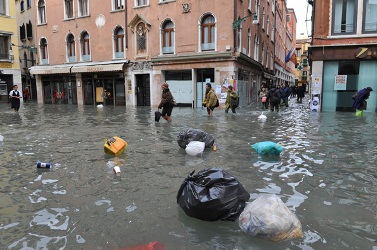 World temperatures could soar by 4 degrees Celsius (7.2 degrees Fahrenheit) by the 2060s in the worst case of global climate change and require an annual investment of $270 billion just to contain rising sea levels, studies suggested on Sunday.
World temperatures could soar by 4 degrees Celsius (7.2 degrees Fahrenheit) by the 2060s in the worst case of global climate change and require an annual investment of $270 billion just to contain rising sea levels, studies suggested on Sunday.
Such a rapid rise, within the lifetimes of many young people today, is double the 2 degrees C (3.6 degrees Fahrenheit) ceiling set by 140 governments at a U.N. climate summit in Copenhagen last year and would disrupt food and water supplies in many parts of the globe.
Rising greenhouse gas emissions this decade meant the 2 degree goal was “extremely difficult, arguably impossible, raising the likelihood of global temperature rises of 3 or 4 degrees C within this century,” an international team wrote.
The studies, published to coincide with annual U.N. climate talks in Mexico starting on Monday, said few researchers had examined in detail the possible impact of a 4 degrees C rise above pre-industrial levels.
“Across many sectors — coastal cities, farming, water stress, ecosystems or migration, the impacts will be greater,” than at 2 degrees, wrote Mark New of Oxford University in England, who led the international team.
One study, published in the British journal Philosophical Transactions of the Royal Society A, said temperatures could rise by 4 degrees C in the worst case by the early 2060s.
Other scenarios showed the threshold breached later in the century or not at all by 2100, raising risks of abrupt changes such as a loss of Arctic sea ice in summer, a thaw in permafrost or a drying out of the Amazon rainforest.
MIGRATION
One of the papers gave what it called a “pragmatic estimate” that sea levels might rise by between 0.5 and 2 meters (1.64 to 6.56 feet) by 2100 if temperatures rose 4 degrees Celsius.
Containing a sea level rise of 2 meters, mostly building Dutch-style sea walls, would require annual investments of up to $270 billion a year by 2100.
That sum might limit migration to perhaps 305,000 people from the most vulnerable areas, wrote Robert Nicholls of the University of Southampton. Lack of protective measures could mean the forced resettlement of 187 million people.
People living on small islands, in Asia, Africa or river deltas were most at risk.
The studies concluded that governments should do more both to cut greenhouse gas emissions and research back-up methods such as “geo-engineering” programs that could dim sunlight or seek to suck greenhouse gases from the air.




